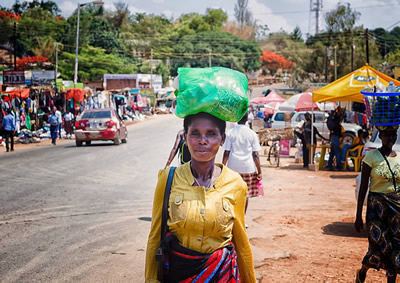Written by Jane Muthumbi, Junior Davis and Milasoa Cherel-Robson of UNCTAD
Migration is one of the most important issues on the international agenda. It also features prominently in the media and has become the subject of ongoing political debates.
Much of the ongoing public debate, however, casts African migration in negative terms. Indeed, images of Africans on boats attempting to get to Europe, not only reinforce this, but have also led to a growing (and misleading) perception that international migration from the continent is primarily to the global North.
UNCTAD’s 2018 Economic Development in Africa Report: Migration for Structural Transformation shows that international migration in Africa is primarily a continental phenomenon, contrary to popular perception. In 2017, more than half – 53% of Africa’s international migrants resided within the continent, many of them circulating within the same African region.

The report, which states that international migration in Africa has grown, with intra-African migration rising from 15 million in 2000 to 25 million in 2017, illustrates that intra-African migration has been a boon for the continent.
For many Africans, migration is an opportunity of a lifetime that offers a chance at a better life for migrants and their families, with benefits extending to future generations. Africa’s international migrants often acquire skills in destination countries that enable them to earn higher incomes and create better livelihoods for themselves and their families.
As the report finds, low-skilled migrant farmers from Burkina Faso, for example, gained new skills in Cote d’Ivoire that allowed them to engage to higher-skilled occupations that often offered better paid and more stable employment.
Intra-African migration yields significant benefits for both destination and sending countries. Destination countries, besides filling critical skills gaps, benefit from improved productivity and increased output. Cote d’Ivoire – a leading migration destination on the continent, has reaped significant benefits from international migration. In 2008, international migrants’ contribution amounted to almost a fifth (19%) of Cote d’Ivoire’s GDP. Origin countries, on the other hand, gain from migrants’ remittances, diaspora investment, along with nostalgia trade generated by migrants’ demand for products from their home countries, and from knowledge, technology and skills transfer from return migrants.
Intra-African migration has helped lift millions out of poverty. For many African women who are increasingly migrating to international destinations on the continent, opportunities in domestic service, informal trade, retail and other services have enabled them to earn incomes that improve their livelihoods, support their families and contribute to poverty reduction in households through in kind and cash transfers.
Contrary to the widely-held belief that migration contributes to growing unemployment in destination countries, the report finds that international migration in Africa is not associated with unemployment in destinations as international migrants often move to regional markets that readily absorb their skills.
Similarly, international migration in Africa does not result in increased public spending in health, in large part because international migrants are likely to cover their own health expenses. Crucially, increased immigration in African countries occurs in parallel with improvements in education and health, especially for girls and women.
With Africa’s working-age population projected to reach 450 million by 2035, Africa will need to create numerous jobs – approximately 55,000 a day according to some estimates, to absorb the extra labour. And international migration in Africa, primarily to other countries on the continent, is only expected to grow as Africans seek economic opportunities.
Whether intra-African migration remains a boon or becomes a curse for migrants and countries will depend on actions that African governments take.
Eliminating regulatory restrictions that hinder migrants from taking advantage of economic opportunities in Africa’s regional markets with robust demand can facilitate intra-African labour mobility. Recognizing low and semi-skilled migrants’ qualifications can enhance their employment prospects and mitigate deskilling – a challenge that some migrants face in destination countries. The removal of preferences for nationals in Morocco, and Rwanda’s temporary visa (H-4) for semi-skilled migrants, are examples of measures that have enabled international migrants to take up employment legally and integrate in labour markets on the continent.
Ensuring legal protections for women who often work in vulnerable, unregulated employment in domestic service, informal trade and other services, and tackling gender-related security risks that inherently affect women’s migration journeys can help Africa’s female migrants to flourish in destinations, promote gender empowerment and support poverty reduction.
Africa stands to reap further benefits from migration. Besides contributing to the continent’s socio-economic development, well-managed intra-African migration that is safe, regular and orderly could substantially boost Africa’s GDP per capita to $3,249 by 2030, up from $2,008 in 2016, and set the continent on a path to greater prosperity.
The Intergovernmental Conference on the first Global Compact safe, orderly and regular migration will be held in Morocco in December 2018. The Conference’s outcome will be put forward to the UN General Assembly. The 2018 Economic Development in Africa Report is part of UNCTAD’s contribution to this historic process. It offers recommendations that African countries and other migration stakeholders within and outside the continent can consider in order to maximize migration’s benefits for destination and origin countries and migrants.



